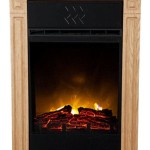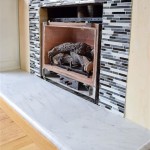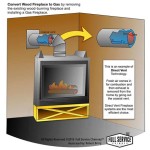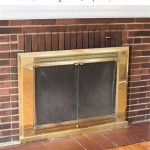Covered Patio Ideas With Fireplace: Creating a Cozy Outdoor Retreat
A covered patio with a fireplace is a highly desirable outdoor living space addition. It extends the usability of your patio throughout the year, providing a comfortable and inviting area for relaxation, entertainment, and even outdoor dining, regardless of the weather. The incorporation of a fireplace adds a focal point and a source of warmth, elevating the ambiance and transforming the patio into a true extension of the home. This article explores various covered patio ideas with a fireplace, emphasizing key design considerations, material choices, and functional aspects to help create the perfect outdoor oasis.
Designing a covered patio with a fireplace involves considering architectural style, available space, and intended use. The style of the patio should complement the existing architecture of the house, creating a cohesive and harmonious look. The size of the patio will dictate the size and placement of the fireplace, as well as the overall layout of the space. Thoughtful planning is crucial to ensure the patio is both aesthetically pleasing and highly functional.
Choosing the Right Fireplace Type
The fireplace serves as the heart of the covered patio, so selecting the right type is paramount. There are several options to consider, each with its unique advantages and disadvantages.
Wood-burning fireplaces offer a traditional and rustic appeal. The crackling sound of the burning wood and the authentic scent create a cozy and inviting atmosphere. However, wood-burning fireplaces require a chimney for proper ventilation and the storage of firewood. They also necessitate more maintenance, including regular cleaning and ash removal. Local regulations regarding wood-burning appliances should also be taken into account.
Gas fireplaces provide convenience and ease of use. They can be turned on and off with the flip of a switch, and the flame height is easily adjustable. Gas fireplaces also produce less smoke and ash compared to wood-burning fireplaces, making them a cleaner option. They require a gas line connection, which may involve professional installation. Propane fireplaces are an alternative if a natural gas line is not readily available.
Electric fireplaces are the easiest to install, requiring only an electrical outlet. They do not produce real flames but simulate the look with realistic flame effects. Electric fireplaces are a good option for smaller patios or areas where venting is difficult. They offer a range of styles and sizes and can be used year-round, even without the heating function.
Outdoor fire pits are a more casual and social option that can be incorporated within a covered patio design. These often serve as centerpieces for seating arrangements and encourage interaction. Fire pits can burn wood, gas or propane, each with its own level of maintenance and installation requirements.
The choice of fireplace directly impacts the overall feel and functionality of the covered patio. Careful consideration of personal preferences, budget, and practical considerations is essential.
Material Selection: Durability and Aesthetics
The materials used for the covered patio and fireplace should be weather-resistant, durable, and aesthetically pleasing. The choice of materials significantly impacts the overall look and longevity of the structure.
Patio Flooring: Common flooring options include concrete, pavers, stone, and tile. Concrete is a durable and cost-effective option that can be stamped or stained to create a variety of looks. Pavers offer a more textured and visually appealing surface, and they are available in a range of materials, including brick, concrete, and natural stone. Stone provides a natural and elegant look, but it can be more expensive. Tile is a versatile option that can be used to create intricate designs, but it is important to choose tiles that are specifically designed for outdoor use to withstand temperature changes and moisture.
Fireplace Surround: The fireplace surround can be constructed from a variety of materials, including brick, stone, concrete, and metal. Brick offers a classic and timeless look, while stone provides a more rustic and natural feel. Concrete can be molded into various shapes and textures, allowing for a modern and customized design. Metal, such as stainless steel or copper, can add a contemporary touch. Consider using materials that complement those used for the home’s exterior.
Cover Structure: The covering for the patio affects protection from the elements. Options range from solid roof extensions to pergolas. Solid roofs obviously block both rain and sun. Pergolas offer filtered sunlight and some level of protection from precipitation. Pergolas can incorporate climbing plants or retractable awnings to vary the level of sun that is blocked.
Ceiling and Walls: Consider the patio's ceiling and walls, especially if the structure is enclosed. Wood ceilings can bring warmth, while painted drywall can bring brightness. Walls around the patio can be made of wood, stucco, brick, or other materials to complement the existing architecture.
When selecting materials, it is important to consider their maintenance requirements. Some materials, such as wood, may require regular sealing or staining to protect them from the elements. Others, such as stone and concrete, are more durable and require less maintenance.
Designing for Functionality and Comfort
A well-designed covered patio with a fireplace should be both functional and comfortable, providing a welcoming space for relaxation and entertainment. Several key design elements contribute to achieving this goal.
Seating Arrangements: The seating arrangement should be comfortable and conducive to conversation. Consider using outdoor sofas, armchairs, and benches, arranged around the fireplace. Adequate seating is essential for creating a welcoming and inviting atmosphere. Incorporate comfortable cushions and throw pillows to enhance the comfort.
Lighting: Proper lighting is crucial for creating ambiance and ensuring safety. Consider installing a combination of ambient, task, and accent lighting. Ambient lighting can be provided by string lights, lanterns, or recessed lighting. Task lighting can be used to illuminate specific areas, such as a dining table or outdoor kitchen. Accent lighting can be used to highlight architectural features or landscaping elements.
Outdoor Kitchen or Bar: If the patio is intended for outdoor dining, consider incorporating an outdoor kitchen or bar area. This could include a grill, countertop space, sink, and refrigerator. An outdoor kitchen makes it easy to prepare and serve meals without having to go back and forth inside the house.
Heating and Cooling: While the fireplace provides warmth during cooler months, consider adding additional heating elements, such as patio heaters, for extended use during the colder seasons. In warmer climates, ceiling fans or misting systems can help keep the patio cool and comfortable.
Television and Audio: Installing an outdoor television and sound system enhances entertainment possibilities. Ensure that the television is weatherproof and protected from the elements. Consider using outdoor speakers that are designed to withstand moisture and temperature fluctuations.
Landscaping: Incorporating landscaping elements, such as potted plants, trees, and shrubs, can enhance the beauty and tranquility of the covered patio. Choose plants that are appropriate for the local climate and that require minimal maintenance. Consider using raised garden beds or vertical planters to add visual interest.
Storage: Adequate storage space is essential for keeping the patio clutter-free. Consider incorporating built-in storage benches or cabinets for storing cushions, blankets, and other outdoor accessories.
Careful consideration of these elements ensures that the covered patio is not only aesthetically pleasing but also functional and comfortable for year-round enjoyment. The goal is to create a space that seamlessly blends the indoors and outdoors, providing a seamless extension of the home.
Furthermore, consider the orientation of the patio with respect to the sun. A patio that faces south may get too much sun during the summer months, while a patio that faces north may be too shaded. Orienting the patio to maximize shade during the hottest part of the day reduces reliance on artificial cooling methods. Strategically planted trees and shrubs can provide additional shade and help regulate the temperature.
Finally, ensure that the covered patio complies with all local building codes and regulations. This includes obtaining any necessary permits and ensuring that the fireplace meets safety standards. Consulting with a qualified contractor or architect ensures that the project is completed safely and according to code.
By carefully considering these factors, a covered patio with a fireplace can be transformed into a truly exceptional outdoor living space. The result is a beautiful, functional, and comfortable area that enhances the enjoyment of the home and provides a welcoming retreat for family and friends.

Dream Outdoor Kitchen Landscaping Ideas Backyard Patio Designs
:max_bytes(150000):strip_icc()/bring-holidays-outside-x-50f80e4865984b36b603a1de82d2938b.jpg?strip=all)
Glowing Outdoor Fireplace Ideas

Outdoor Fireplace Ideas The Home Depot

53 Most Amazing Outdoor Fireplace Designs Ever Modern Patio

10 Outdoor Fireplace Ideas You Ll Want To Copy Bob Vila

30 Outdoor Fireplace Ideas Cozy Fireplaces

Outdoor Fireplaces Paradise Red Landscaping

Deck Fireplace Designs Amazing Decks

Covered Patio Designs For Outdoor Fireplaces Undercover Eoyment Design Fireplace

10 Outdoor Fireplace Ideas You Ll Want To Copy Bob Vila








